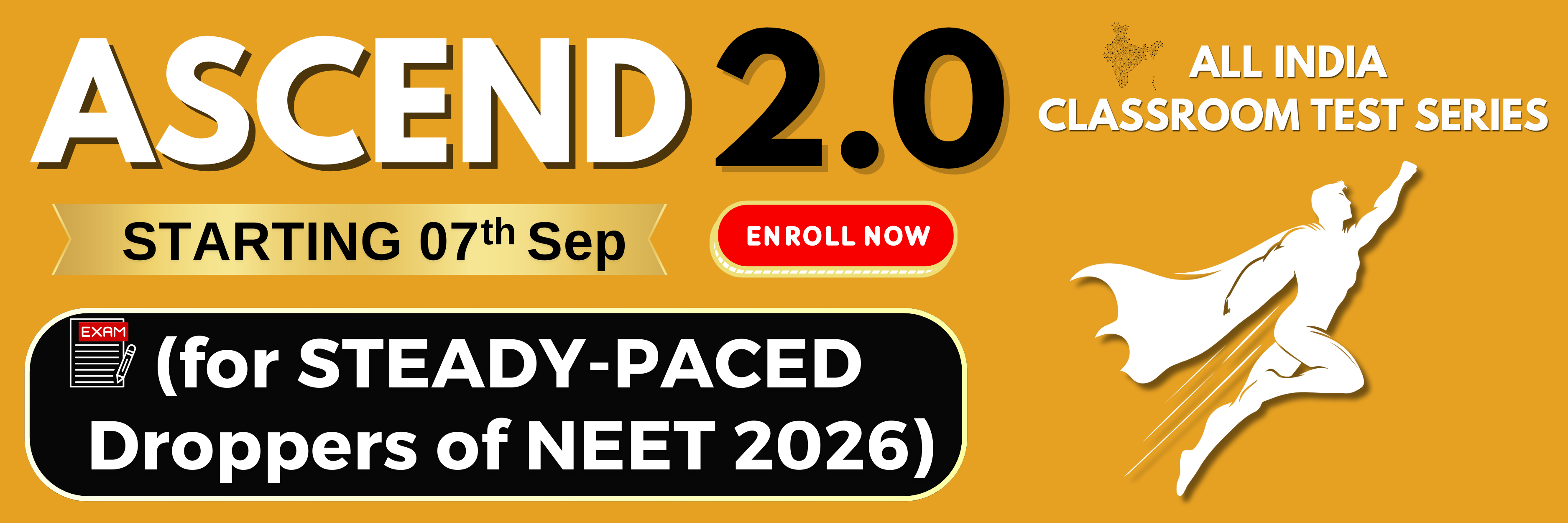Assertion(A): Geitonogamy is similar to autogamy.
Reason(R): Pollen grains come from the same flower of a different plant.
1. Both (A) and (R) are true and (R) is the correct explanation of (A).
2. Both (A) and (R) are true, but (R) is not the correct explanation of (A).
3. (A) is true, but (R) is false.
4. (A) is false, but (R) is true.
Subtopic: Pollination & Outbreeding Devices |
78%
Level 2: 60%+
To view explanation, please take trial in the course.
NEET 2026 - Target Batch - Vital
Hints
To view explanation, please take trial in the course.
NEET 2026 - Target Batch - Vital
Assertion(A): Angiosperms have a unique phenomenon called double fertilization.
Reason(R): Double fertilization includes triple fusion and syngamy in the embryo sac.
1. Both (A) and (R) are true and (R) is the correct explanation of (A).
2. Both (A) and (R) are true, but (R) is not the correct explanation of (A).
3. (A) is true, but (R) is false.
4. (A) is false, but (R) is true.
Reason(R): Double fertilization includes triple fusion and syngamy in the embryo sac.
1. Both (A) and (R) are true and (R) is the correct explanation of (A).
2. Both (A) and (R) are true, but (R) is not the correct explanation of (A).
3. (A) is true, but (R) is false.
4. (A) is false, but (R) is true.
Subtopic: Double Fertilization |
Level 3: 35%-60%
To view explanation, please take trial in the course.
NEET 2026 - Target Batch - Vital
Hints
To view explanation, please take trial in the course.
NEET 2026 - Target Batch - Vital
Assertion(A): Seed formation is more dependable (assured) in angiosperms.
Reason(R): Reproductive processes such as pollination and fertilization are dependent on water in angiosperms.
1. Both (A) and (R) are true and (R) is the correct explanation of (A).
2. Both (A) and (R) are true, but (R) is not the correct explanation of (A).
3. (A) is true, but (R) is false.
4. (A) is false, but (R) is true.
Reason(R): Reproductive processes such as pollination and fertilization are dependent on water in angiosperms.
1. Both (A) and (R) are true and (R) is the correct explanation of (A).
2. Both (A) and (R) are true, but (R) is not the correct explanation of (A).
3. (A) is true, but (R) is false.
4. (A) is false, but (R) is true.
Subtopic: Seed |
74%
Level 2: 60%+
To view explanation, please take trial in the course.
NEET 2026 - Target Batch - Vital
Hints
To view explanation, please take trial in the course.
NEET 2026 - Target Batch - Vital
Zea mays have 20 chromosomes in its somatic cell. The number of chromosomes in its endosperm will be:
| 1. | 10 | 2. | 20 |
| 3. | 30 | 4. | 40 |
Subtopic: Double Fertilization | Endosperm |
77%
Level 2: 60%+
Please attempt this question first.
Hints
Please attempt this question first.
The two innermost wall layers of microsporangium in an anther are:
| 1. | Endothecium and tapetum |
| 2. | Epidermis and endodermis |
| 3. | Epidermis and middle layer |
| 4. | Middle layer and tapetum |
Subtopic: Stamen: Microsporangium |
83%
Level 1: 80%+
Please attempt this question first.
Hints
Please attempt this question first.
At maturity, the female gametophyte in angiosperms has:
1. Only I is correct
2. Only II is correct
3. Both I and II are correct
4. Both I and II are incorrect
| I: | Three cells grouped together at the micropylar end constituting the egg apparatus |
| II: | Three cells are at the chalazal end and are called the antipodals |
2. Only II is correct
3. Both I and II are correct
4. Both I and II are incorrect
Subtopic: Pistil: Female Gametophyte |
89%
Level 1: 80%+
Please attempt this question first.
Hints
Please attempt this question first.
Consider the two statements:
| Statement I: | Cleistogamous flowers are invariably autogamous. |
| Statement II: | Chasmogamous flowers can never be autogamous. |
| 1. | Statement I is correct; Statement II is correct |
| 2. | Statement I is correct; Statement II is incorrect |
| 3. | Statement I is incorrect; Statement II is correct |
| 4. | Statement I is incorrect; Statement II is incorrect |
Subtopic: Pollination & Outbreeding Devices |
81%
Level 1: 80%+
Please attempt this question first.
Hints
Please attempt this question first.
Cells of which of the following wall layer of microsporangium possess dense cytoplasm and generally have more than one nucleus?
| 1. | epidermis | 2. | endothecium |
| 3. | middle layers | 4. | tapetum |
Subtopic: Stamen: Anther | Stamen: Microsporangium |
91%
Level 1: 80%+
Please attempt this question first.
Hints
Please attempt this question first.
During the formation of the embryo sac in angiosperms, cell walls are laid:
| 1. | from the first nuclear division |
| 2. | between the 2-nucleate and 4-nucleate stage |
| 3. | before the 8-nucleate stage |
| 4. | after the 8-nucleate stage |
Subtopic: Pistil: Female Gametophyte |
74%
Level 2: 60%+
Please attempt this question first.
Hints
Please attempt this question first.
The pollen intine is:
| 1. | a thin and continuous layer made up of cellulose and pectin. |
| 2. | a thick and discontinuous layer made up of cellulose and pectin. |
| 3. | made up of sporopollenin and is a continuous layer. |
| 4. | made up of sporopollenin and has prominent apertures called germ pores. |
Subtopic: Stamen: Anther | Stamen: Male Gametophyte |
92%
Level 1: 80%+
Please attempt this question first.
Hints
Please attempt this question first.






